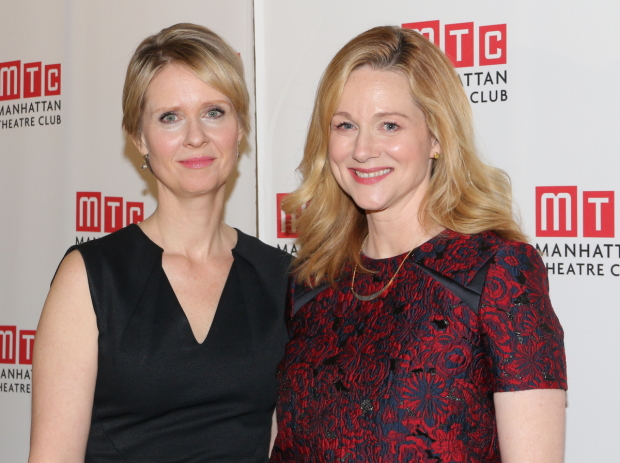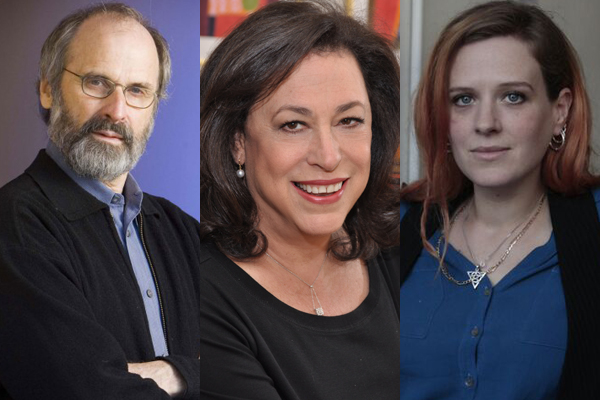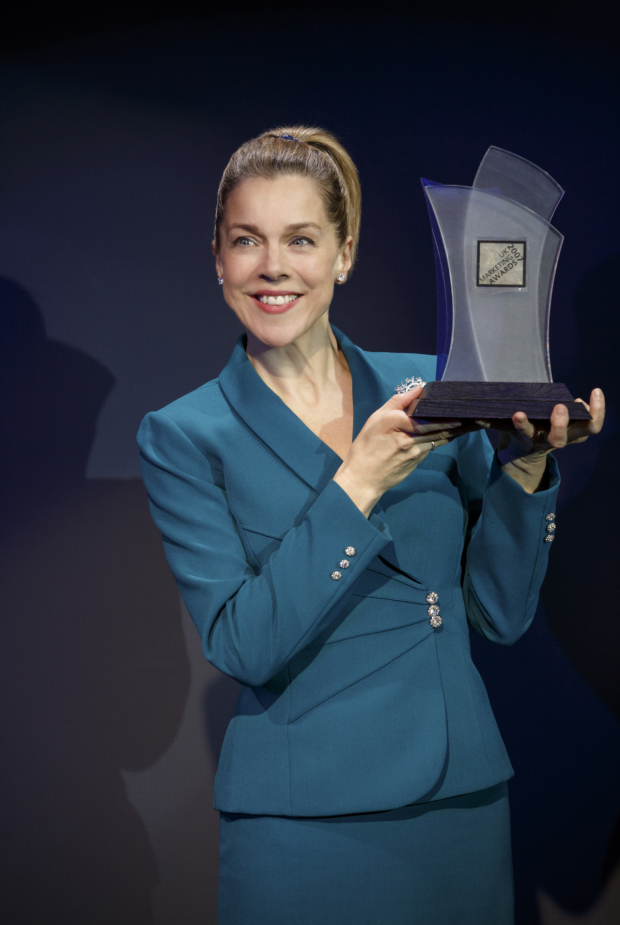The Women of MTC and Beyond Are Done Being Cautionary Tales
From Lillian Hellman’s ”The Little Foxes” to Penelope Skinner’s ”Linda”, Manhattan Theatre Club audiences may be ready to let women be human.

(© Richard Termine)
According to the 1940 U.S. census, the employment rate of men over the age of 16 was 83 percent to women's 27 percent. In 2010, those numbers were 70 percent for men versus 59 percent for women. In 1937, a woman's average annual pay was $525, compared with $1,027 for men — roughly a 1:2 ratio. That ratio is now a little over 3:4 — not perfect, but certainly progress.
When Lillian Hellman premiered her seminal play The Little Foxes in 1939, it was to a society of men and women joined at a seam — one that simultaneously fused them in a fabric of domestic interdependence but separated their worldviews into distinct and unbreachable spheres. In The Little Foxes, set in 1900 Alabama where that disparity is even more defined, one sphere is occupied by Regina Giddens and Birdie Hubbard — two financially reliant Southern women. The other is occupied by the men to whom they are beholden. For Regina, that's her brothers who have inherited their father's fortune. For Birdie, that's her wealthy husband Oscar (one of Regina's aforementioned brothers).
"The kind of woman that Lillian Hellman is writing about is someone who is simply held down either as a lesser citizen or a lesser member of a family," said Daniel Sullivan, who directs Manhattan Theatre Club's current Broadway revival of The Little Foxes at the Samuel J. Friedman Theatre (Laura Linney and Cynthia Nixon share the roles of Regina and Birdie). They're characters that Hellman, as a woman writing less than 20 years after women's suffrage, understood in a way a man rarely could in that time. "I think it would have been hard for a male playwright of that period to see these characters from such a multifaceted point of view," said Sullivan. "It really took a woman to write these characters."

(© David Gordon)
Now, almost eight decades later, we find ourselves wondering if that's still the case. If we're headed in the right direction as a society, the answer should increasingly inch toward no. "As equality has grown," said Sullivan, "playwrights have become much more sophisticated and much more understanding of the fact that we're all human beings and can get inside the characters of women."
For proof of this trend, just look at Little Foxes costar Cynthia Nixon's professional history at Manhattan Theatre Club alone: She won a Tony Award in 2006 for her performance as Becca in the MTC production of Rabbit Hole, followed by a Tony nomination in 2012 with MTC's production of Wit. The latter is a 1999 Pulitzer Prize-winning play by Margaret Edson while the former is a 2007 Pulitzer Prize-winning play written by David Lindsay-Abaire.
Evolved female characters are no longer strictly a female playwright's market, one reason being that male writers are slowly adapting to a world of shared experience. After all, Becca in Rabbit Hole is simply a parent grieving the loss of her child, while Dr. Vivian Bearing is a victim of terminal illness, reflecting on her life as someone nearing the end of it.
If that awareness of universality is being felt among playwrights in general, is the same transition happening among audience members? According to Lynne Meadow, MTC artistic director and the director of Penelope Skinner's Linda (now running on Stage 1 of the company's off-Broadway space at New York City Center), it just may be.
"I thought, 'OK, we're going to have mainly women who want to come to see the play,'" said Meadow about Linda — a story that follows a 55-year-old mother, wife, and cosmetics pioneer who grows increasingly obsolete in all facets of her life. "But I have found that men really enjoy this piece. And I don't think you can enjoy a piece without in some way relating to it and seeing some aspect of yourself."
Skinner herself emphasizes that this play was not written solely for and about women. "We are all going to find out what it's like to get old and feel ignored," she said. "That's going to happen to men as well."

(images provided by Boneau/Bryan-Brown)
And yet Skinner, culling through her personal experiences, still notes a disturbing discrepancy between the responses to male and female stories.
"The more plays that I've done, the more that I realize that to an extent I'm dealing with what the audience brings in terms of their expectation of what a female narrative is," said Skinner. "So telling a story about it all going wrong for a woman — some people in the audience are going to go, 'Oh, it's a cautionary tale about what happens when a woman overreaches herself.' We're just so used to judging women and expecting them to be punished that we watch things through that lens."
Hellman's Little Foxes could certainly be viewed from that vantage point. In order to get her hands on the family fortune that was denied her, Regina has to play a man's game, and the result is not exactly a fairy-tale ending. She's a woman who overreached and look what happened. However, if you look at Regina free from the context of gender, the "cautionary tale" becomes one about the universal topics of greed, ambition, and ruthlessness for men and women alike. When the playwright has done his or her job writing a three-dimensional character, the onus is on the viewer to greet that character unburdened by their socially imposed expectations.
Does that mean audiences should be blind to gender when they go to the theater? Not necessarily. Gender and character are irrevocably intertwined, most explicitly in period pieces. As Sullivan noted, Hellman's ability to capture the private inner life of women of that time — no matter how unflattering — was (and still is) one of her most inimitable assets.
"We don't want to misrepresent," said Skinner, "but representing people as perfect or likable or entirely sympathetic — that is a misrepresentation."
So how does someone tell a story that is both specifically female and universally human? Perhaps now it's the audience's job to realize that they're not mutually exclusive — because a woman's story is a human story.

(© Joan Marcus)








